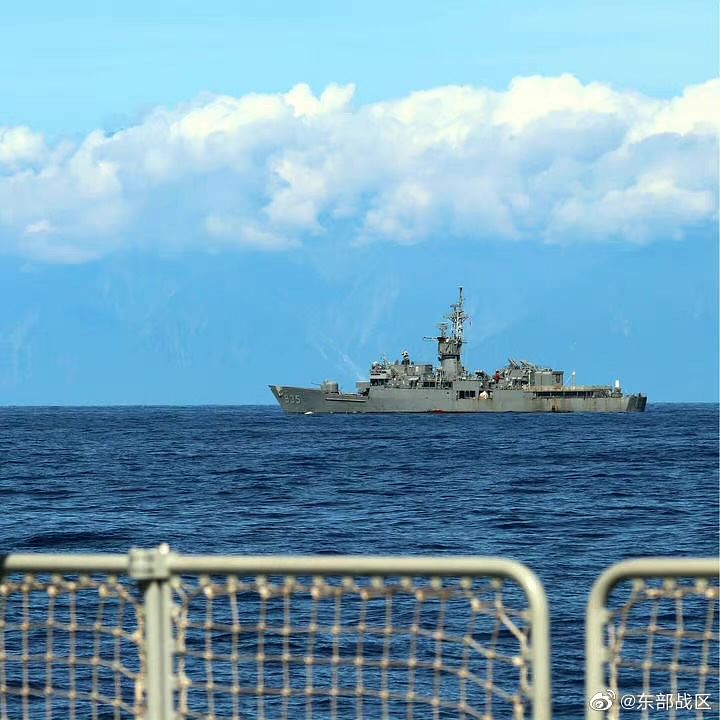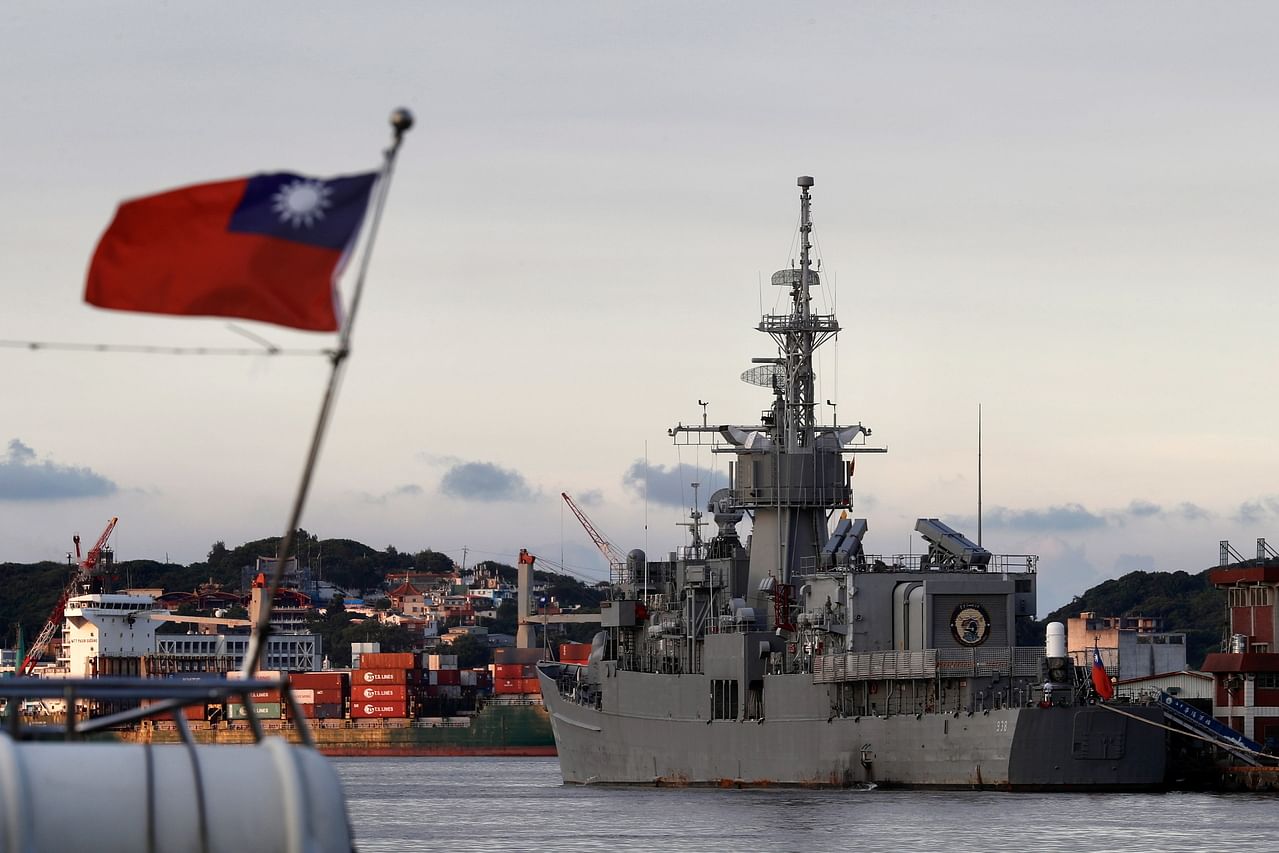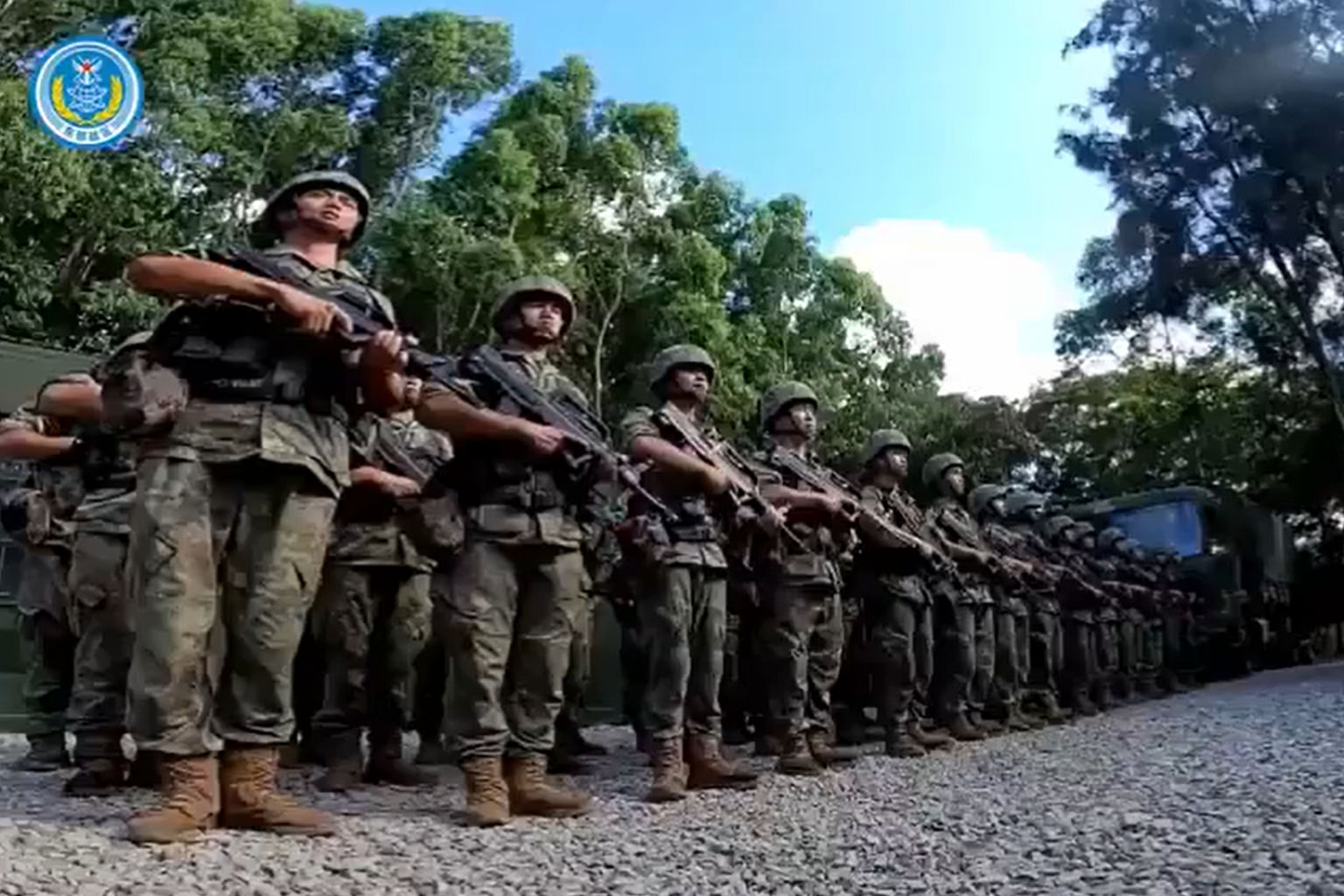Taiwan says Chinese planes, ships carry out attack simulation drill as PLA forces get close to island
Sign up now: Get insights on Asia's fast-moving developments
Follow topic:
TAIPEI/BEIJING (BLOOMBERG, AFP, REUTERS) - China's aircraft and warships rehearsed an attack on Taiwan on Saturday (Aug 6), island officials said,
as Chinese forces appeared to be getting close to Taiwan's shores.
as Chinese forces appeared to be getting close to Taiwan's shores.
China doubled down on the exercises, held in retaliation for a visit to Taiwan by US House Speaker Nancy Pelosi that also saw Beijing halt talks on security and other issues with the United States.
In a bid to show just how close China's forces have been getting to Taiwan's shores, Beijing's military overnight released a video of an air force pilot filming the island's coastline and mountains from his cockpit.
China’s state news agency Xinhua on Saturday released a photo taken the previous day showing a People’s Liberation Army (PLA) soldier monitoring Taiwan navy’s Lan Yang, a Chi Yang-class frigate.
While the PLA did not specify where the photo was taken, a white structure that appeared to be the chimney of the Ho-Ping power plant in Hualien county on the east coast of Taiwan could be identified, according to the South China Morning Post.
The Chinese exercises – centred on six locations around the island – are scheduled to last until midday on Sunday.
Taiwan’s defence ministry said on Saturday that Taiwan scrambled jets to warn away 20 Chinese aircraft, including 14 that crossed the median line - an unofficial buffer separating the two sides - in what it described as a simulated attack on the island. It also detected 14 Chinese military ships conducting activities around the Taiwan Strait.
Chinese warships and aircraft continued to “press” into the median line of the Taiwan Strait on Saturday afternoon, a person familiar with security planning had also said.
Off Taiwan’s east coast and close to Japanese islands, Chinese warships and drones simulated attacks on US and Japanese warships, the person added.
Taiwan’s army broadcast a warning and deployed air reconnaissance patrol forces and ships to monitor while putting shore-based missiles on stand-by.
Its defence ministry also said it fired flares late on Friday to warn away seven drones flying over its Kinmen islands and unidentified aircraft flying over its Matsu islands. Both island groups are close to mainland China’s coast.
Taiwan's defence ministry also published a photo of a Taiwanese sailor on a frigate looking at a nearby Chinese warship off Taiwan’s east coast. “Absolutely not
photoshopped!” the caption said.
photoshopped!” the caption said.
It said on Saturday that it had fired flares late on Friday to warn away seven drones flying over its outlying Kinmen Islands and to warn unidentified aircraft flying over its outlying Matsu Islands.
The ministry said troops were on high alert in both areas, which lie just off the coast of mainland China.
Relations between China and US have nosedived in the wake of Mrs Pelosi's trip to the self-ruled island - which China claims as its territory - prompting calls from the UN for an urgent de-escalation of tensions.
And Friday saw the environment become the latest victim of the geopolitical jousting, as Beijing said it would withdraw from a series of talks and cooperation agreements with Washington - most notably on climate change and defence cooperation.
The world's two largest polluters had pledged to work together to accelerate climate action this decade and vowed to meet regularly to tackle the crisis - a deal that now looks shaky.

PHOTO: EASTERN THEATRE COMMAND/ WEIBO
'Punishing the whole world'
The scale and intensity of China's drills have triggered outrage in the US and other democracies, with the White House summoning China's ambassador to Washington on Friday to rebuke him over Beijing's actions.
And Beijing's decision to withdraw from hard-won cooperation on climate change has now sparked wider fears about the future of the planet.
"It's obviously worrying and raises concerns," Mr Alden Meyer, a senior associate at E3G, a climate-focused think-tank, told AFP.
It's "impossible to address the climate emergency if the world's number one and number two economies and number one and number two emitters are not taking action", he said.
"And it's always preferable that they do that in a collaborative way."
National Security Council spokesman John Kirby told reporters in Washington the decision was "fundamentally irresponsible".
"They're actually punishing the whole world, because the climate crisis doesn't recognise geographic boundaries and borders," Mr Kirby said.
"The world's largest emitter now is refusing to engage on critical steps necessary to combat the climate crisis."
United Nations Secretary-General Antonio Guterres warned the two superpowers must continue to work together - for the world's sake.
"For the secretary-general, there is no way to solve the most pressing problems of all the world without an effective dialogue and cooperation between the two countries," his spokesman Stephane Dujarric said.

'The new normal'
But with tensions over Taiwan having risen to their highest level in nearly 30 years with an elevated risk of military conflict, experts told AFP the latest downturn in relations between the two superpowers could be deep and long-lasting.
"The relationship is in a very bad place right now," said German Marshall Fund China expert Bonnie Glaser.
The suspension on Friday of bilateral military and maritime dialogue while China continues its military exercises was "particularly worrisome", she said.
"We don't know what else they will do... We just don't know if this is just a temporary thing."

Mr John Culver, a former CIA Asia analyst, said in a discussion hosted by the Centre for Strategic and International Studies that Beijing's main purpose with its military exercises was to change that status quo.
"I think that this is the new normal," Mr Culver said.
"The Chinese want to show... that a line has been crossed by the Speaker's visit."
Japan’s defence ministry reported that as many as four missiles flew over
Taiwan’s capital, which is unprecedented. It also said that five of nine missiles fired towards its territory landed in its exclusive economic zone on Thursday.
Taiwan’s capital, which is unprecedented. It also said that five of nine missiles fired towards its territory landed in its exclusive economic zone on Thursday.
Japanese Prime Minister Fumio Kishida told visiting UN Secretary-General Antonio Guterres that he strongly condemned China’s missile launches as “a serious issue concerning Japan’s security and the safety of Japanese people”, the foreign ministry said.
A spokesman for the Chinese embassy in Japan on Saturday said, “Japan is adding embellishments and is being manipulative, and is habouring selfish wants and malignant intentions. We once again solemnly urge the Japanese side not to play the political game of 'using Taiwan to contain China', and to refrain from going down the wrong path.”
The Chinese Embassy in Australia, meanwhile, said Beijing hoped Australia will be prudent on Taiwan issues and avoid being led by others which could cause fresh trouble for their ties.

